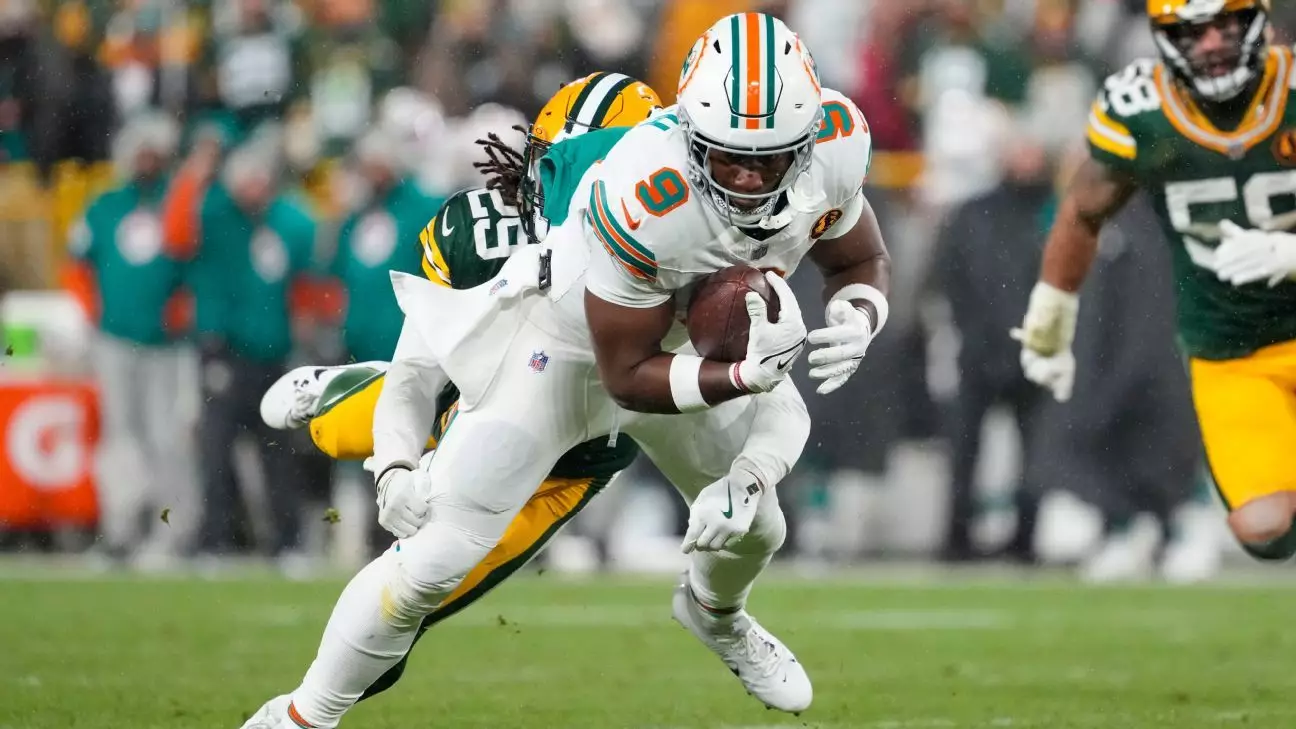In the high-stakes game of professional football, the art of negotiation and roster management is critical, and unfortunately, the Pittsburgh Steelers’ recent moves reflect a growing frustration within the organization. The talk of a possible trade for Miami Dolphins tight end Jonnu Smith seemed like an exciting opportunity that could add depth to the Steelers offense. However, hopes are dashed as reports indicate that Pittsburgh is moving on, with Smith expressing a strong desire to stay in Miami. It seems the Steelers are now left contemplating a scrambled strategy to fill their widening gaps at the tight end position.
The disconnect evident in the Steelers’ plan is not just a simple case of miscommunication; it reveals a team grappling with its identity. The departure of key players, like George Pickens to the Dallas Cowboys, signals a seismic shift in their roster dynamics. This search for receiving talent cannot merely be seen as an attempt to patch up holes; it exposes deeper underlying issues—most notably a lack of vision in assembling a competitive team.
The Quandary of Free Agency
With Smith seemingly off the table, the Steelers have turned their attention to free agent Gabe Davis. Although he has displayed flashes of brilliance during his career, primarily with the Buffalo Bills, there are questions about his reliability following an injury-riddled season with the Jacksonville Jaguars. In a league where consistency is vital, relying on a player with a torn meniscus is undoubtedly a gamble that might not pay off. This is not just about filling a roster spot; it requires a strategic and insightful approach—something the Steelers are failing to demonstrate.
The allure of Davis lies in his past performance; he boasts impressive career statistics that suggest a capacity for high returns. Nevertheless, any team looking to him for immediate impact must confront the player’s recent struggles and questionable health. Pittsburgh’s desperation might lead them to overlook such red flags, echoing a broader trend in the NFL where teams sometimes chase potential rather than proven results.
Jonnu Smith’s Case: The Ideal Candidate Gone Awry
Jonnu Smith’s situation paints a picture of what might have been for the Steelers. His record-breaking season with the Dolphins reflects not just talent, but a deeper connection to the Miami community and the organization—a connection that the Steelers lack. The tight end’s agent, Drew Rosenhaus, made it abundantly clear that Smith’s heart lies in Miami, and understandably so; organizations should be able to cultivate talent while accommodating their aspirations. Ironically, Smith’s stellar performance has only firmed up his position with the Dolphins, leaving the Steelers desperate for a player who truly wants to contribute.
Claiming an understanding of player relationships isn’t enough. The Steelers’ interest in acquiring Smith was linked to offensive coordinator Arthur Smith’s history with him. Yet, this strategy feels like a last-ditch effort to create synergies that simply might not exist anymore. The reality is that building a roster involves more than utilizing old connections; it requires foresight and the ability to predict how players will fit into a new team culture.
Pittsburgh’s Identity Crisis
As the Steelers scramble to find a resolution—whether in free agency or trade—it begs the question of their long-term vision. The organization seems embroiled in an identity crisis, attempting to walk the fine line between nurturing talent and competing fiercely in a league that demands results. With each failed trade proposal and free-agent visit, it appears they might be drifting further from an effective plan.
In the center-wing liberal perspective that champions transparency and forward-thinking, one cannot help but criticize the lack of coherent strategy at play within the Steelers organization. Instead of throwing good resources after bad, it would serve Pittsburgh better to reassess its player development, coaching strategies, and overall direction. The NFL is more than just a business; it is a tapestry of relationships and aspirations, and the Steelers risk missing the essence of the game altogether.
Ultimately, navigating the complex web of player acquisitions is fraught with challenges, particularly when legacy organizations lose their way. No longer can the Steelers rely solely on name recognition; proactive change is essential for them to revitalize their identity and reclaim a prominent place in the league.


Leave a Reply